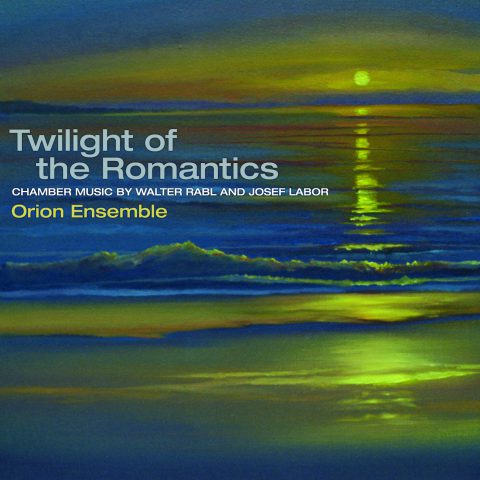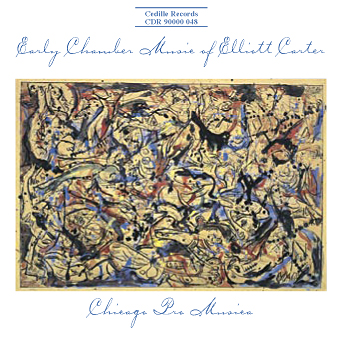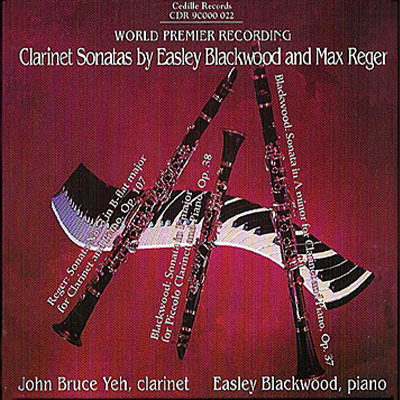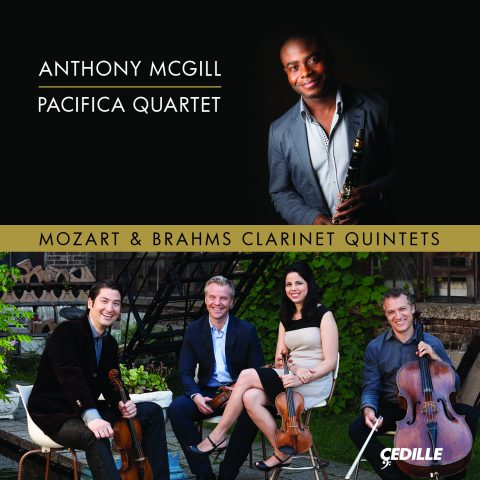Store
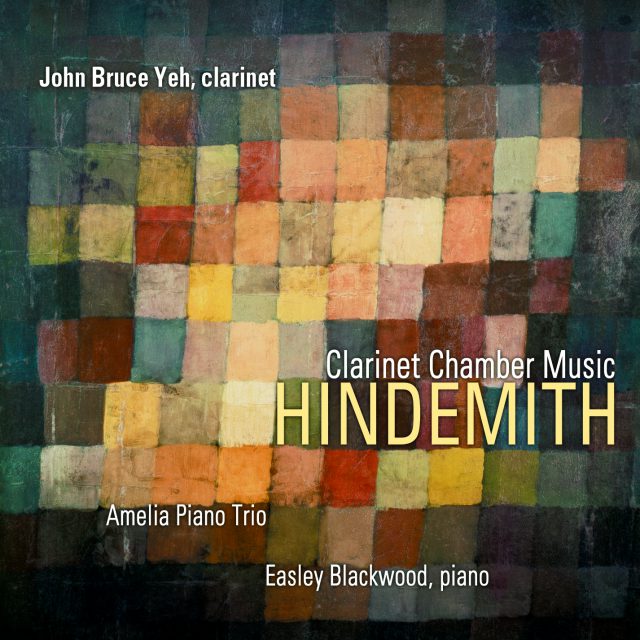
The most enigmatic and neglected figure in the pantheon of great modernist composers, Paul Hindemith is best known by today’s audiences for a few serious symphonic works. In reality a big-hearted humanist with a sense of humor, Hindemith has acquired, since his death a no-nonesense musical personality. John Bruce Yeh sets out to remedy this situation with this album.
Preview Excerpts
PAUL HINDEMITH (1895-1963)
Sonata for Clarinet and Piano
Quintet for Clarinet and String Quartet Op. 30
Two Duets for Violin and Clarinet from the Music Day at Plon
Quartet for Clarinet, Violin, Cello, and Piano
Artists
Program Notes
Download Album BookletClarinet Chamber Music by Hindemith
Notes by Stephen Heinemann
Benjamin Disraeli once observed, “A man who is not a liberal at sixteen has no heart; a man who is not a conservative at sixty has no head.” By this reckoning, Paul Hindemith reached sixty at the age of twenty-eight. His first mature works had established him among the radical composers of the early modernist era, but an abrupt about-face in 1923 set him on a course of conservatism that, save for flirtations with electronic instruments in the late 1920s and with Anton Webern–influenced serialism thirty years later, would inform the rest of his prolific and distinguished career as composer, theorist, and pedagogue.
To Hindemith, the major triad was a fact of nature, clearly the harmonic manifestation of the overtone series, the physical acoustic property of the musical tone. (He had greater difficulty explaining the minor triad, finally regarding it as a “clouding” of the major.) By extension, tonality — the system of major and minor keys that had governed musical creation for three centuries — must likewise be a fact of nature. The composer most responsible for upending tonal practice, Arnold Schoenberg, predicted in his Theory of Harmony, “As for laws [of tonality] established by custom, however — they will eventually be disestablished.” Hindemith, the antidisestablishmentarian, held that mere custom could not account for the vast riches of tonality; unlike his contemporaries, he believed that its possibilities had not been exhausted. His solutions for extending musical syntax will sound, to the casual listener, more evocative of Schoenberg than of Brahms, but the crucial elements of historical practice — key centers, elaborate imitative counterpoint, traditional forms, instrumental combinations — remain primary, albeit modified to accomplish the particular intentions of individual pieces.
In the first volume of his theoretical treatise The Craft of Musical Composition, Hindemith asserted: “Music, as long as it exists, will always take its departure from the major triad and return to it. The musician cannot escape it any more than the painter his primary colors, or the architect his three dimensions. In composition, the triad… can never be avoided for more than a short time without completely confusing the listener.” Elsewhere, he compared tonality with perspective in painting, a parallel of systematic techniques that seems more apt (the elemental tones perhaps being analogous to primary colors). Yet, while Hindemith admitted that a painter was free to obliterate perspective, he denied that a composer could avoid tonality, likening that to the attempt to escape gravity — a simile that was probably a good deal more compelling when it was made in 1952 than it is today. Many of his “scientific” observations have not borne up well to close scrutiny, yet they still constitute an eminently thoughtful basis for the effects of his art, which, like the music of virtually all composers, have proved stubbornly recalcitrant to systematic scientific investigation and explanation.
Hindemith did not view himself as a reactionary but as a pilot attempting to right a foundering ship. His aim was to write highly evolved tonal music that, for him, was intrinsically more advanced than atonal music at any point on an evolutionary scale. His aesthetic was derived from writings of the ancients St. Augustine and Boethius, who predated tonal practice by a millennium but in whose words Hindemith found particular resonance. Augustine’s De musica held that musical knowledge unified the human soul with the divine, while Boethius’s De institutione musica asserted that “Music is a part of our human nature; it has the power either to improve or to debase our character” — both admonishments that Hindemith cherished deeply. He may not have been overtly religious in the manner of J. S. Bach, but he was certainly a spiritual person whose beliefs thoroughly informed his art, his craft, and his work ethic. He therefore worried about the effects of technology (“radio, Muzaks, and other relentlessly running music-faucets — a nonstop flow of faceless sound”) on people’s ability to listen attentively, blaming not so much those listeners as the “artists, managers, and agents catering maliciously to an ever-ready tendency towards the least resistance [with] the one goal, entertainment.”
Bach is the composer with whom Hindemith, with his thirst for craftsmanship and counterpoint, may be most profitably compared. The composer and critic Virgil Thomson perceived a connection to a more recent forebear, writing that Hindemith “is a neoclassicist like Brahms, with ears glued firmly to the past.” Like Bach and Brahms, Hindemith believed that anyone can have musical ideas, but it is composers, whether they are first-rate or sixth-rate, who learn how to preserve and develop these ideas. What separates the genius from rest, he claimed, is vision, which he compared to the detailed sight of a landscape illuminated for a second by brilliant lightning: “We experience a view, immensely comprehensive and at the same time immensely detailed…. Compositions must be conceived in the same way. If we cannot, in the flash of a single moment, see a composition in its entirety, with every pertinent detail in its proper place, we are not genuine creators.” This is very close to the clichéd view of inspiration, the “necessary angel” that Igor Stravinsky, certainly a genuine creator, sought to dispel as “in no way a prescribed condition of the creative act, but rather a manifestation that is chronologically secondary…. Step by step, link by link, it will be granted him to discover the work. It is this chain of discoveries, as well as each individual discovery, that give rise to the emotion.” One cannot doubt Hindemith’s own experience, but its actual significance may be overstated. What is unquestionably valuable within his concept of “vision” is the necessity of composing from the background (Ursatz) to the foreground (Vorgrund), terms introduced into musical thought by the great music theorist Heinrich Schenker, a man for whose work Hindemith expressed profound admiration. (This was a sentiment that Schenker did not return, however; he disliked Hindemith’s compositions intensely and referred to Brahms as “the last great master of German music.”)
Hindemith contended that, regardless of its abstract nature, music remained a form of communication between the composer and listener. He disdained esoteric composition but denied having sacrificed his artistic sensibilities for the sake of a mass audience. “It is one thing to write down to the bad instincts of the unrefined listener, and another to satisfy… the just demands of a cultured customer,” he wrote. “The attitude of the arrogant composer is similar to that of the millionaire who cannot understand that other people are in want of money.” The written music itself is appropriately but not overly detailed in its performance directions. Probably due to Hindemith’s own significant achievements as a performer (Stravinsky called him “the consummate violist”), he placed a great deal of faith in the ability of musicians to execute properly the instructions he gave: “With the ingenious player or singer the problem of style in performance is practically nonexistent…. They make the listener feel how a performance is for a composition what a precious crystal goblet is for an exquisite wine: the wine’s quality remains unchanged, but its color and bouquet unfold in all their splendor.”
*****
Sonata for Clarinet and Piano
Through much of his career, but particularly between 1935 and 1943, a favorite project of Hindemith’s was the composing of sonatas for various instruments — some solo, some with piano accompaniment, all of lasting quality. 1939 was his most productive year in this respect, seeing the completion of no fewer than six sonatas, including the Clarinet Sonata, which he wrote in a mere eight days.
Hindemith appreciated that the clarinet, although last among the orchestral woodwinds to appear (in the late seventeenth century), grew rapidly beyond its early status “as an ordinary intruder [to be] recognized as a useful addition with great potentialities,” many of which — particularly its expressiveness, agility, and range — he sought to explore in the Sonata. One writer has observed that the composition is “a great work which requires more musical intelligence than technique, and is consequently not as popular as it deserves.” It is nevertheless a staple of the clarinetist’s repertoire, frequently undertaken at the college level as an early example of music by a master composer. Like its distinguished forerunners, the Brahms clarinet sonatas, it lies fluidly under the fingers; rewards the player who meets its particular challenges of rhythm, phrasing, and ensemble (the performers are equal partners rather than soloist and accompanist); and is so substantial that performers can return to it again and again, confident that it will continue to provide previously unrecognized levels of musical satisfaction.
John Bruce Yeh here performs this work on an Oehler system clarinet, a descendant of the old Albert fingering system. The Oehler is common in Germany but has been largely supplanted elsewhere by the Boehm system clarinet, which Yeh plays on the other pieces.
- Moderately, with motion: An economical opening phrase constructed from the intervals of descending thirds, ascending fourths, and oscillating seconds provides much of the motivic material for this sonata-form movement; the fourths are particularly significant here and to the work as a whole.
- Lively: A sharply profiled opening is joined to dotted (long-short) rhythms and counterpointed with a soft but expansive melody. The syncopation of the piano is picked up and developed by the clarinet.
III. Very slowly: The ascending fourths from the first movement are further developed here in a theme that soon reveals itself as a canon subject. The wistful closing theme is one of Hindemith’s great melodic statements.
- Little rondo, leisurely: A simple theme unfolds with deceptive nonchalance and evolves into kaleidoscopic exchanges between the performers before a quiet and somewhat abrupt conclusion.
Quartet for Clarinet, Violin, Cello, and Piano
Hindemith began composing the Quartet aboard the S.S. Hamburg en route from New York to Europe and completed it in Frankfurt in April of 1938. The quartet was premiered two months later in the Swiss canton of Valais. The principal voices are those of the clarinet and violin, while the cello and piano tend to take supporting roles.
- Moderately, with motion: A secondary theme (again featuring ascending fourths) exposed in the celloachieves primacy through extensive development. A harmonically static section near the movement’s end evokes Stravinsky before leading to a quiet coda.
II.Very slowly: A nostalgic and introspective clarinet theme is undercut by chromatic string harmonies and sparse piano sonorities; a declamatory center section recalls aspects of the first movement. The clarinet theme returns, but newly clothed in a pointillistic accompaniment.
III. Moderately, with motion — lively — calmly, with motion — very lively: A stately processional is expansively developed before giving way to a bouncy, tarantella-like section. The ensuing calm contrasts the ensemble of clarinet and strings with the solo piano, while the rapid conclusion is notable for its insistent polyrhythms.
Quintet for Clarinet and String Quartet
Composed in July 1923 but not published until 1935, the Quintet is one of the works that Hindemith chose to revise in 1954, a choice made partly in the wake of his theoretical research and partly because his newly full-time teaching commitment at the University of Zurich and the flourishing of his conducting activities precluded a focus on new compositions. Although some of the pieces subjected to his “rehabilitation” suffered a resultant loss of impact, the revised Quintet, performed here, is not among them. To a greater degree than even the Quartet, it is an intense and virtuosic piece, and it is novel for its use, in the third movement, of the E-flat clarinet, the notoriously challenging sopranino instrument of which John Yeh is a master.
- Very lively: Unusually visceral dissonance and agitation mark the brief, driving first theme. Even the lyricism of a subordinate theme cannot affect the momentum in a movement where the composer does not develop his themes so much as insist on them. A held tone in the cello leads directly into
- Calm — lively — as at the beginning: A quiet, expansive fugue gradually transforms into cascades of sound that give way to a clarinet cadenza. The clarinet elongates the opening subject over a veiled, plucked accompaniment, and subtle, intricate counterpoint resolves to a final major triad.
III. Fast Ländler: The Ländler, a waltz-like dance, is given a raucous, scherzo-like treatment. A contrasting middle section emphasizes the strings and provides a foil for the return of the original tempo.
- Very calmly: An overtly expressive violin tune is accompanied by gently percussive strings and interrupted by clarinet swells.
- Very lively, as in the first movement: The unusual motivation of the first movement finally becomes clear: the fifth movement is its exact retrograde (that is, the same notes are presented in reverse order); the outer movements thus create a large musical palindrome. It is a testament to Hindemith’s craftsmanship that the artifice is completely convincing, as neither movement suffers musically from the note-to-note dictates of the other.
Evening Concert from the Music Day at Plön
These pieces were written for a music festival on June 20, 1932 in the small town of Plön, about 30 miles north of Hamburg in northern Germany. Eschewing the usual format that delivers a retrospective on a composer’s masterworks, this festival instead commissioned Hindemith to write a series of short pieces for the occasion, most of them easy enough for the music students and amateur musicians of the town to perform and enjoy. All the works were composed a month before the festival, and Hindemith spent four days at a Plön boarding school rehearsing and discussing the pieces with student performers. The “Day of Music in Plön” consisted of Morgenmusik (morning music) for a brass ensemble to play from the village tower, the piece from this set that is most frequently performed; Tafelmusik (music to accompany the mid-day meal) for wind soloist and strings; a cantata (called “Advice to Youth”) for children’s chorus, soloists, and orchestra; and the Abendkonzert (evening concert) of six short pieces including an orchestral prelude and postlude, works for a recorder trio, a flute solo with strings, and, recorded here, the Variations for Clarinet and Strings and Two Duos for Violin and Clarinet.
Evening Concert No. 4: Variations for Clarinet and String
Theme: Calmly, with motion
Var. I: At the same tempo
Var. II: Lively
Var. III: Slowly
Var. IV: At the beginning tempo
A placid, memorable theme is followed by four variations. The first of these elaborates the theme via triplet rhythms; the second, by assertive string chords and a quickly flowing clarinet line; the third, by violin arpeggiations; and the fourth, by varied repetition or augmentation of the theme’s phrases.
Evening Concert No. 3: Two Duets for Violin and Clarinet
Lively: The clarinet plays a supporting role to a lolling violin melody. Hindemith effects subtle textural changes in the middle of the duet through the use of a few well-chosen violin double-stops.
Moderately, with motion: The instruments operate on an equal footing in this inventive miniature, constantly trading musical roles — literally so at the conclusion.
*****
Probably no consideration of Hindemith’s work has been made that has not mentioned his creation of, and association with, the concept of Gebrauchsmusik — variously translated as “useful,” “workaday,” or “utility” music — and the present writing is no exception. In what was perhaps a bit of historical revisionism, he attempted to disown the term: “Quite obviously music for which no use can be found, that is to say, useless music, is not entitled to public consideration anyway…. Up to this day it has been impossible to kill the silly term and the unscrupulous classification that goes with it.” Yet the word “useful” appears so frequently in his writings that the concept merits further consideration. Utilitarian musics unquestionably exist — film music, martial music, the dreaded background music — and one senses that Hindemith would have regarded all of these as useless, since they all place music at the periphery of one’s attention and thus betray its power to connect the listener with the divine. To be truly “useful,” music must be at the forefront: pace Boethius, if it does not improve us, it debases us.
As the generic titles he favored would indicate, Hindemith wrote music that tends not to leave the listener with programmatic, non-musical images. Rather, one will perceive the interaction of purely musical elements as well as a decided impression of the composer himself — a man of impeccable honesty and sincerity, one who set his compositional aims high and met them: “In music,” he wrote, “as in all other human pursuits, rational knowledge is not a burden but a necessity, and it ought to be recognized as such by all…. A composer’s horizon cannot be far-reaching enough; his desire to know, to comprehend must incite, inspire, and drench every phase of his work. Storming the heavens with artistic wisdom and practical skill must be his least ambition.” Once regarded among Stravinsky, Schoenberg, and Béla Bartók in the pantheon of the greatest composers of his era, Hindemith has since been relegated to a subordinate position, replaced by Webern and Alban Berg. But the inevitable pendulum swing of taste now arcs in his direction, and his “conservative” music sounds in certain respects much more daring than many works being composed today. A recording such as this one is not a manifesto for a reconsideration of the composer’s rightful place in history, but will be without doubt “useful,” in Hindemith’s sense of the word, in keeping undeniably wonderful music before the attentive listener — precisely where it belongs.
Stephen Heinemann is Associate Professor of Music Theory, Composition, and Clarinet at Bradley University. His published writings have dealt with the compositions of Elliott Carter and Pierre Boulez.
Album Details
Total Time: 73:12
Recorded: November 16, 2001 & March 3-5, 2002 at WFMT Chicago
Producer: Judith Sherman
Engineer: Bill Maylone
Graphic Design: Melanie Germond
Front Cover: Paul Klee, Alter Klang / Ancient Sound, 1925, 236(X6) 38.1 x 37.8 cm; Oeffentliche Kunstsammlung, Basel. © 2005 Artists Rights Society (ARS), New York / VG Bild-Kunst, Bonn
Notes: Stephen Heinemann
© 2003 Cedille Records/Cedille Chicago
CDR 90000 072
